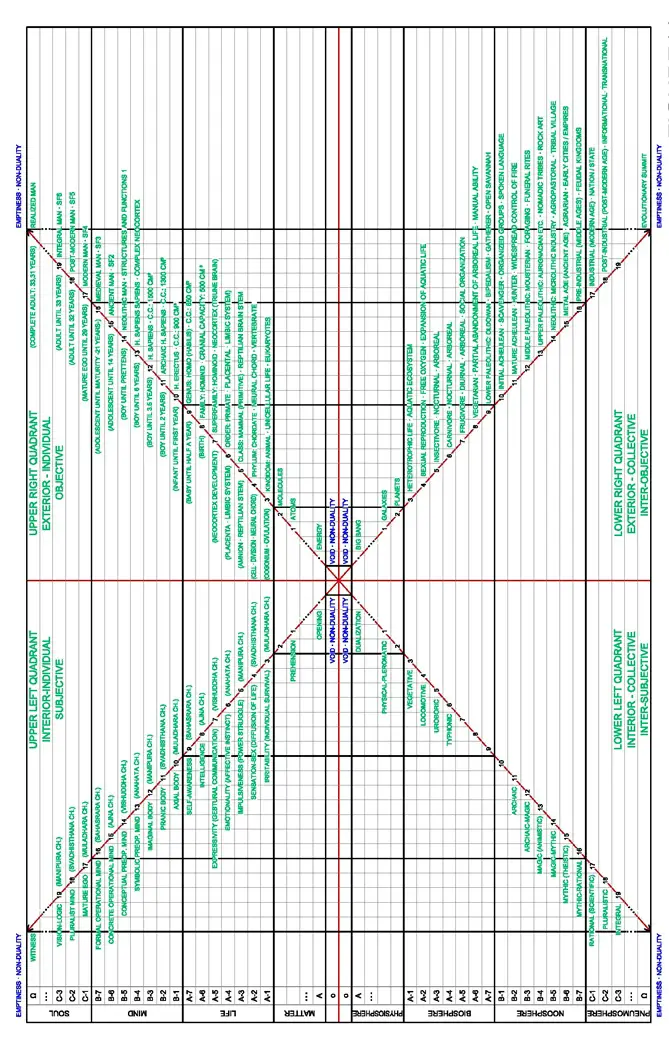|
TRANSLATE THIS ARTICLE
Integral World: Exploring Theories of Everything
An independent forum for a critical discussion of the integral philosophy of Ken Wilber
 Jóse Díez Faixat is an architect, non-violent conscientious objector, ecologist, rural community member. From 1979 he has focused on research into basic reality, of form both as experienced (mystical, non-dualistic) and as theoretical (study of spiritual traditions and the sciences of the New Paradigm). In 1993, he published his hypothesis in the journal of general evolution World Futures (ed. Ervin Laszlo), and later, in 1996, develops this work in the book Between Evolution and Eternity (Editorial Kairos). He later published Being nothing, I am All (Editorial Dilema). Jóse Díez Faixat is an architect, non-violent conscientious objector, ecologist, rural community member. From 1979 he has focused on research into basic reality, of form both as experienced (mystical, non-dualistic) and as theoretical (study of spiritual traditions and the sciences of the New Paradigm). In 1993, he published his hypothesis in the journal of general evolution World Futures (ed. Ervin Laszlo), and later, in 1996, develops this work in the book Between Evolution and Eternity (Editorial Kairos). He later published Being nothing, I am All (Editorial Dilema).A Response to Faixat's Musicological Musings on Evolution
BEYOND DARWINThe Hidden Rhythm of EvolutionAddendum 3: Integral EvolutionJOSÉ DÍEZ FAIXAT
In almost all his work, Wilber has placed greater emphasis on the exhaustive study of the interior (psychological and spiritual) spheres.
Throughout this article, we have analyzed the evolutionary rhythm of both the global “macrocosm” —the human phylogeny— and the individual “microcosm” —our own ontogeny— in their respective and similar trajectories, from the original pole, basically energetic —exterior—, until the final pole, basically conscious —interior—. These four aspects —individual/collective, interior/exterior— have been present in each stage of the evolutionary path, as they all imply one another. None of them could take place without the presence of all the others. Unfortunately, this evidence has not been demonstrated until very recently, while bias and sectarianism have produced a great deal of incomprehension and suffering throughout history. The great integral thinker Ken Wilber has condensed virtually all of human knowledge in a simple chart that summarizes the entire history of evolution in its four aspects —individual, collective, exterior and interior— of an all-englobing and consistent way. It comprises a simple diagram with four quadrants, in which “individual” aspects are located at the top, “collective” aspects at the bottom, “exterior” aspects on the right and “interior” aspects on the left. Thus, the upper-left quadrant describes the interior-individual process (the conscious self); the upper-right quadrant, the exterior-individual process (the energy organism); the lower-left quadrant, the interior-collective process (the cultural perspective); and the lower right quadrant, the exterior-collective process (the social system). All the evolutionary levels displayed throughout the history of the universe —the entire energy-consciousness spectrum— are reflected in each of the quadrants according to their specific aspects. In almost all his work, Wilber has placed greater emphasis on the exhaustive study of the interior (psychological and spiritual) spheres. On the other hand, the authors mentioned in the previous Addenda have found it easier to resort to exterior forms when investigating the rhythm of evolution based on paleontological and anthropological data. It seems clear that the integration of both bodies of work can be extremely fruitful for all. We shall thus attempt to express the results of our research in a diagram (Figs. 11) similar to that of Wilber's four quadrants. We believe that, in this way, we can provide greater precision in the definition of the levels of the energy-consciousness spectrum.

Figure 11
|